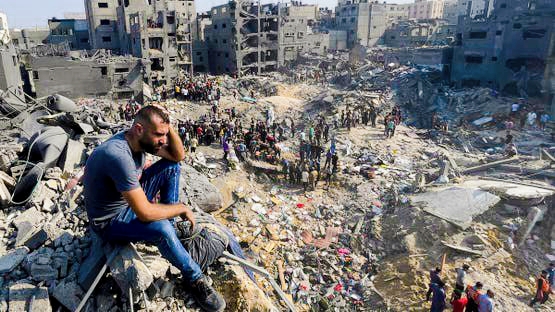The Jabalia camp in northern Gaza has witnessed a violent wave of continuous Israeli bombing since Saturday evening, where the Israeli army used escalatory methods that included detonating residential homes with explosive robots, amid intense artillery shelling that targeted the heart of the overcrowded camp.
In a new tragic development, local and medical sources reported that dozens of Palestinian youths were killed while trying to receive humanitarian aid in the Zikim area in the north of the sector, as well as in the Netzarim axis in central Gaza, where scenes of gunfire on civilian gatherings near aid distribution points were repeated.
A medical source in Gaza hospitals confirmed that the number of dead since dawn has exceeded 40 martyrs, due to a series of Israeli airstrikes that targeted various areas of the sector.
In the same context, Al-Awda Hospital in the Nuseirat camp announced that it received 3 martyrs and 16 injuries in the past 24 hours, who fell under the fire of the Israeli army near an aid distribution point south of the Gaza Valley.
In the south of the sector, Israeli warplanes launched consecutive airstrikes on areas northwest of Khan Younis, coinciding with heavy artillery shelling that targeted the eastern neighborhoods of the city, which increased the level of destruction and suffering in those areas.
These developments come amid the beginning of the preliminary phase of the occupation of the city of Gaza, a plan that has been approved by the Israeli army and government, and is considered one of the largest military operations being prepared by Tel Aviv in the sector.
According to Israeli sources, the process of controlling the city, which is home to about one million Palestinians, may take more than a full year, amid international and UN warnings of an unprecedented humanitarian catastrophe that may result from this escalation.
Meanwhile, the humanitarian crisis in the Gaza Strip continues to worsen day by day, amid the blockade, food shortages, the collapse of the health system, and scenes of death that have come to dominate the daily lives of the exhausted residents of the sector.

